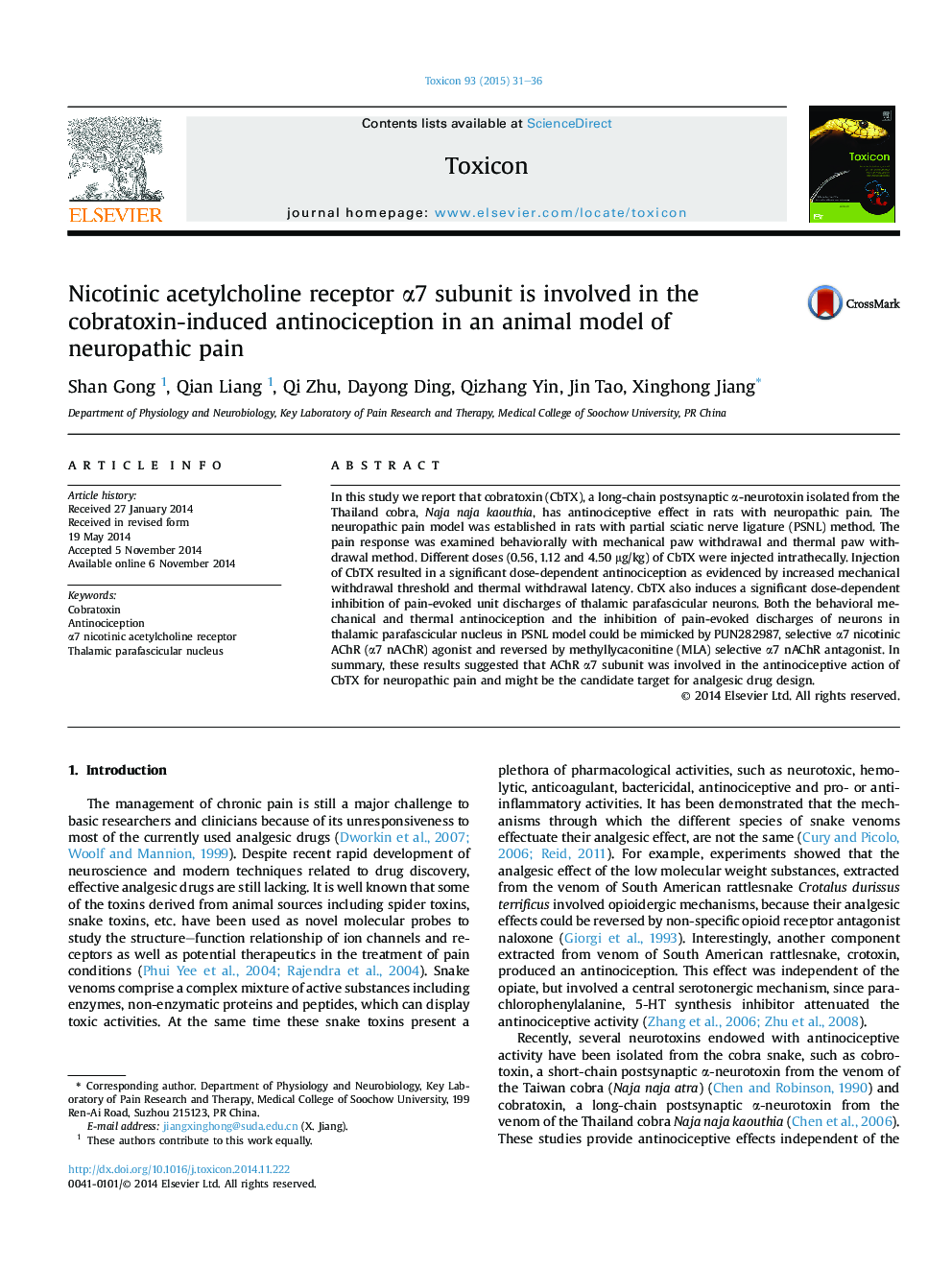| Article ID | Journal | Published Year | Pages | File Type |
|---|---|---|---|---|
| 8395768 | Toxicon | 2015 | 6 Pages |
Abstract
In this study we report that cobratoxin (CbTX), a long-chain postsynaptic α-neurotoxin isolated from the Thailand cobra, Naja naja kaouthia, has antinociceptive effect in rats with neuropathic pain. The neuropathic pain model was established in rats with partial sciatic nerve ligature (PSNL) method. The pain response was examined behaviorally with mechanical paw withdrawal and thermal paw withdrawal method. Different doses (0.56, 1.12 and 4.50 μg/kg) of CbTX were injected intrathecally. Injection of CbTX resulted in a significant dose-dependent antinociception as evidenced by increased mechanical withdrawal threshold and thermal withdrawal latency. CbTX also induces a significant dose-dependent inhibition of pain-evoked unit discharges of thalamic parafascicular neurons. Both the behavioral mechanical and thermal antinociception and the inhibition of pain-evoked discharges of neurons in thalamic parafascicular nucleus in PSNL model could be mimicked by PUN282987, selective α7 nicotinic AChR (α7 nAChR) agonist and reversed by methyllycaconitine (MLA) selective α7 nAChR antagonist. In summary, these results suggested that AChR α7 subunit was involved in the antinociceptive action of CbTX for neuropathic pain and might be the candidate target for analgesic drug design.
Related Topics
Life Sciences
Biochemistry, Genetics and Molecular Biology
Biochemistry, Genetics and Molecular Biology (General)
Authors
Shan Gong, Qian Liang, Qi Zhu, Dayong Ding, Qizhang Yin, Jin Tao, Xinghong Jiang,
